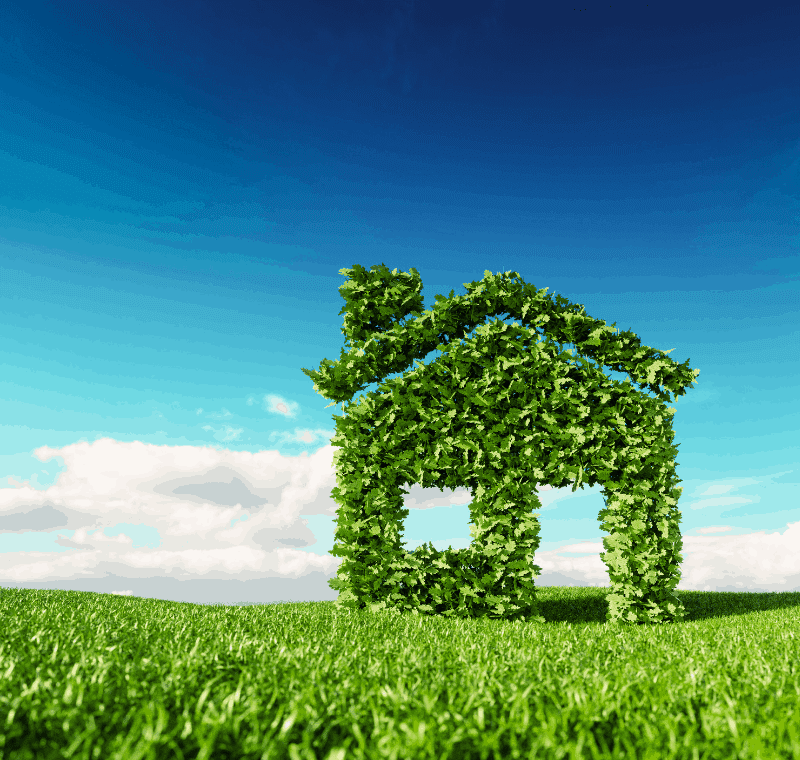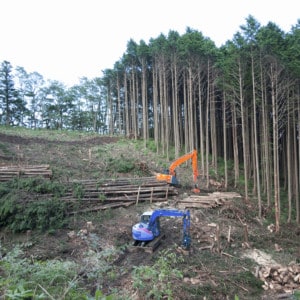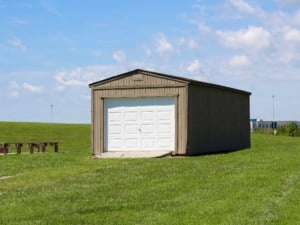How a Carbon-Negative Future Will Change the Storage Industry
- August 8, 2022
- Eco-Friendly
The storage industry is not the most obvious example of a greenhouse gas emitter, but looking closer, we see that self-storage involves…
Read More
The self-storage industry negatively impacts the environment in many different ways. Continuously constructing self-storage facilities takes energy, time, and materials which has a devastating carbon footprint. As we continue to construct self-storage facilities, we continue to increase our carbon footprint. PeerStorage helps improve the environmental impact of self-storage by providing an opportunity for renters to store their belongings in an already existing space. Find out more about how the self-storage industry is destroying the environment and how PeerStorage is out to solve these environmental concerns.
When renting a storage unit, one would usually not consider the facility’s environmental impacts as they throw their extra belongings into a cold, dark box. Large storage facilities rent to users without portraying their immense use of lighting, heating, cooling, and humidity control required for each unit. Every rental immediately impacts the environment, all while everyone’s extra items are stored in boxes for years. We are here to inform self-storage users, and those searching for self-storage, that these units are negatively impacting the environment more than one would have considered.
The self-storage industry has been around since the late 1800s with a total of 52,786 facilities in the United States, and growing. This takes up around 1.8 billion sq. ft of storage space, according to the 2020 Self-Storage Almanac. This equates to a larger amount of storage facilities than there are as many McDonalds, Starbucks, Pizza Huts, Dunkin Donuts, and Wendy’s combined. That is an unbelievable amount of facilities storing all of America’s extra possessions. Self-storage development has been rapidly increasing since 2014, with $5 billion spent on construction in 2018 alone. Not only are there large amounts of storage facilities, but the construction of these facilities are expanding at an increased rate. Additionally, although the rates of development are high, there is still an under-supply of self-storage in major cities. This has generated the need for innovative ways to store items, such as renting out empty space in garages and someone’s storage shed.
When renting a storage unit, users do not consider the environmental impact each unit has on the environment. Most do not stop to consider the amount of energy required to maintain a temperature-controlled environment inside each unit, let alone the amount of materials required for the development of each facility. These issues alone result in a high carbon footprint calculation for self-storage facilities. In a study conducted by the Washington State Department of Archaeology and Historic Preservation, “80 billion BTUs of energy are embodied in a typical 50,000 sq. ft. commercial building, the equivalent of about 640,000 gallons of gasoline.” That is equivalent to the energy used in 656 homes per year, which still does not include additional energy expensed for the upkeep and operations of each self-storage facility throughout its lifetime. The study also reports that 43% of carbon emissions and 39% of total energy use is attributed to the construction and operation of buildings. Although this includes all commercial buildings, the development of self-storage facilities is a huge portion of this calculation. In addition to the large amount of energy required to develop facilities, the accumulation of debris that ends up in landfills is primarily the resultant of demolition and construction projects. In Washington State, an estimated 1,383,998 tons of debris per year ends up in landfills due to this effort. In other words, construction and demolition of buildings in the state of Washington averages an additional 2.2 lbs. of garbage per person, per day, thrown into landfills. If we want to decrease our carbon footprint, we must find ways to decrease self-storage development by utilizing our existing space.

According to this STR Pipeline Report, there were 22 new self-storage developments in the Seattle area in 2018 alone. With the average self-storage facility being 46,000 sq. ft., this adds up to over 1 million sq. ft. of new self-storage development. In terms of the carbon footprint on our planet, this equates to 12.8 million gallons of gasoline to develop these new facilities.
Washington State passed the State Environmental Policy Act (SEPA) in 1971 which is a process to identify and analyze environmental impacts associated with government decisions. We found a SEPA Environmental Checklist for the development of a self-storage facility in Vashon, WA. This facility holds 152 units, is 98,600 sq. ft., and has a projected lifespan emission of 296,135 MTC02e. That is equivalent to the energy utilized by 34,172 homes per year. This includes the construction, transportation of customers, and energy to operate a single facility. Imagine how much of a carbon footprint 52,786 facilities and 1.8 billion sq. ft. has on our planet.
Additionally, the unfortunate truth about the construction of new developments is that it results in the demolition of existing habitats. In the SEPA checklist, 41 trees (evergreen and deciduous) were destroyed and removed from the area. Not only does it take an incredible amount of energy to develop these buildings, but it also takes away from the existing habitat which provides us clean air and the ability to recycle carbon emissions. Trees and habitats do not grow back in a short timeframe, and they take time to become the carbon collecting system they once were. As we continue to build, we are destroying crucial parts of nature that help to maintain the health of our environment.
The most environmentally friendly storage solution is one where we utilize existing space on our property such as a garage, bedroom, storage shed, basement, lot, or parking space. We like to refer to it as the Airbnb of self-storage. Using space that already exists uses zero additional energy or maintenance to develop or operate. Storing possessions in a neighbor’s already climate-controlled, lit, unused bedroom, is the ideal storage environment. Belongings are coming from homes, so why not store it in another?

So, what is the difference between someone’s storage shed and a storage unit? Not much. Surprisingly, the climates are pretty similar. Most possessions are designed to be stored inside a home, so why not store them in the environment they were originally designed for?
When comparing the use of a storage shed at a home to a storage unit in a facility, the main difference raised for concern is security. With today’s technology, verifying and possibly conducting background checks on those renting storage space would be a top priority. This method is similar to that proven by Airbnb and Uber. The sharing economy has transformed the hotel and taxi industry, why not transform the self-storage industry?
Another key difference between the two storage options (other than cost) would be the environmental impacts of storing possessions at a large, newly-developed facility, in comparison to the environmental benefits of utilizing space that already exists. There is a huge demand for storage with insane amounts of money thrown into construction. If only the large carbon footprint and environmental impacts would be communicated to those searching for and building storage units. The security of our belongings is manageable, but the environmental impacts are everlasting. Our goal is to create the first carbon negative storage service by encouraging Americans to list their unused space, which will help the planet one small space at a time.
The only carbon emitted from storing items in a home is the transportation of the items being stored. That’s it! In most cases, the rented space is conveniently located. The amount of travel time and gas usage will be greatly reduced when storing items in a neighbor’s garage, versus driving thirty minutes to a self-storage facility.
When people realize they can help the environment and generate income by renting unused space, then a network will be created to promote the usage of self-storage in communities, all while emitting minimal carbon emissions in the process.
The self-storage industry deserves some credit for their green storage-facilities initiative. Many large storage companies, such as Extra Space Storage, CubeSmart self-storage, and Public Storage, are working to decrease their carbon footprint. They are starting to use efficient Heating, ventilation, and air conditioning (HVAC) units, lighting systems, and some facilities are powered by solar power. Some HVAC units have an 80% efficiency rating. This means they use 80% less energy to produce the same outcome than what it used to take to perform the same task. Although these HVAC units are saving energy, they’re also using a lot of energy to control the climate of their facilities. Going green is a must for storage facilities as they require an incredible amount of energy to operate. Storage companies’ advertisements may sound environmentally friendly, but in comparison to the utilization of already existing space, these solutions are not conducive to a healthy environment.
Let’s also address the use of solar panels as a green solution for storage facilities, as solar energy is not as environmentally friendly as most realize. While generating electricity through photovoltaics is indeed better for the environment, the manufacturing and mining of the materials that make up these products has a trail of chemical pollution and carbon emissions. The most common material used in solar panels is silica (silicon dioxide). The silicon quartz is extracted from mines which takes large amounts of energy to extract, as well as expose miners to hazardous conditions and lung disease. Once mined, the material that goes into this manufacturing process involves giant furnaces to keep the material at an extremely high temperature, which also takes up an incredible amount of energy. Additionally, to get the purest form of silicon for solar panels, the material goes through a series of refinement processes, which creates more chemical waste than it does producing the polysilicon itself. Some of this waste reaches water streams, releasing hydrochloric acid and emitting harmful fumes. The solar panel industry relies on the public believing in its advertisements of being the global warming solution, but are they truly as green as we are made to believe? Much of the struggle to keep the manufacturing of solar panels green has been nicely written in the IEEE Spectrum article Solar Energy Isn’t Always as Green as You Think. Spending millions of dollars on solar energy can help decrease the immediate usage of energy but also promotes mass amounts of energy and chemical usage during the manufacturing process.
So, how does this compare to more innovative storage solutions? Well, mentioned above, storing your belongings in a home that has unutilized space uses almost zero extra energy, carbon emissions, or chemical waste. This is clearly the most environmentally friendly and most efficient way to store items. There is simply no comparison to a service that requires no development, solar panels, paper, water to support the facility, or extra equipment such as HVAC systems to be maintained. When we recognize the environmental impact from self-storage units, then we can greatly reduce the amount of energy used and the carbon emitted from developing and operating large facilities.
As mentioned above, storing your items in someone’s garage, storage shed, basement, or extra bedroom is a net zero carbon emission soution. No extra materials used for development, no debris from construction goes to the landfill, no extra energy used to control the climate and lighting to the space, no paper or water wasted to support facility operations, and no destroying of habitats taking away the carbon collecting ecosystems that help clear our environment. Utilizing unused space is the only eco-friendly storage solution in the world!
Promise you will do the environment a favor, walk around your property and look for any space you havent used in the last 3-6 months. Do you think this can be used by someone who needs to store some stuff for the winter? If yes, feel free to Become a Host and start making extra money while helping the planet. Listing your space is simple, safe, and free for everyone. Not to mention, PeerStorage has pledged to plant two (2) trees for every new listing or booking through our service with our partnership with the National Forest Foundation. Not only will your listing make you money, it will also help our fundraising goal to raise $10,000 for the National Forest Foundation.
In conclusion, self-storage facilities increase our carbon footprint exponentially in multiple ways. The energy, materials, and waste needed for development and operations is hurting the environment more than we realize. Thankfully there are ways to help the environment through how we view and use self-storage. We can stop the expansion of self-storage facilities in our area if we open up our homes and unused storage to needed customers. As a perk, people who rent their space will be generating income! Our homes are the most efficient and environmentally beneficial storage solution. Let’s help save the Earth one small space at a time!
You must be logged in to post a comment.
[…] How the Self-Storage Industry Impacts The Environment […]
[…] How the Self-Storage Industry Impacts The Environment […]
[…] How the Self-Storage Industry Impacts The Environment […]
[…] How the Self-Storage Industry Impacts The Environment […]
[…] How the Self-Storage Industry Impacts The Environment […]